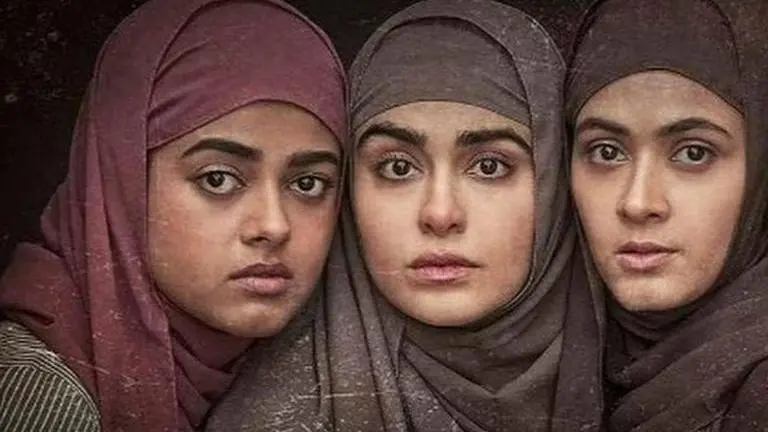Updated 6 May 2023 at 21:00 IST
The Kerala Story Review: Realistic, rooted, raw but raring to be fleshed out
The Kerala Story is a raw and hard-hitting tale that explores how youthful naivety can fall prey to forces beyond their scope of imagination.
- Entertainment News
- 4 min read

The Kerala Story opened in theatres on Friday, May 5, but the film has been making headlines ever since the release of its trailer. Kerala Chief Minister Pinarayi Vijayan has called the film a ‘product of the Sangh Parivar’s lie factory,’ while Prime Minister Narendra Modi said the film shows the ugly truth of terrorism. In the journey to its release, The Kerala Story has seen numerous petitions in several courts seeking to stall its screening. But having braved all, how has the film really fared? Let’s find out.
The Kerala Story revolves around the life of Shalini Unnikrishnan (Adah Sharma), a young woman from Kerala from a middle class family. Like many middle class women in Kerala, Shalini enrols herself in a nursing course in Kasaragod. There, she finds friends in her roommates Asifa (Sonia Balani), Geetanjali (Siddhi Idnani), and Nimah (Yogita Bihani).
Things start off happy for Shalini before Asifa entraps her and her three friends into a web of manipulation. Pit against all the travails of being a woman in semi-urban Kerala, Shalini and Geetanjali find a ready solution to their problems – offered by Asifa – located in conversion, and eventually subscription to the cause of the Islamic State, a terror group.
The narrative hits hard for its focus on a subject that has often been kept at bay for its incendiary potential. Director Sudipto Sen, who had earlier made a documentary on the same subject titled In The Name of Love, is now armed with fictional devices that enable him to explore the human temperament at its vulnerable core. The film doesn’t seek to lecture, but simply puts events in their socio-political context(s).
Advertisement
The film begins with a note that states: Inspired by several real-life incidents, and therefore sheds the weight of sticking true to documentary truth in an attempt to explore something truer. The audience is introduced to Adah’s character while she is facing incarceration, and then cuts to her home in Kerala where Shalini, in a very relatable manner, is attempting to assuage her mother and grandmother's reluctance at letting her leave home to pursue a career in nursing.
The makers of the film adopt a show-don’t-tell approach to articulate how the three young women are brainwashed into giving up their faiths. The sequences move at a pace that is realistic and consequently chilling. In one of the scenes that attempt to shock, a character spits on her father while he is ailing at a hospital.
Advertisement
The Kerala Story features two scenes that show sexual harassment, but to Sudipto Sen’s credit, the scenes are so sensitively shot that they stand against sensationalism. The same applies to a graphic sequence in which a character is killed in public view. The violence is realistic, not gratuitous.
Coming to performances, Adah Sharma is the heart and soul of The Kerala Story. The actress, best known to Hindi audiences for her work in 1920 and Hasee Toh Phasee, sinks her teeth into a challenging character. Her eyes speak a thousand words and her accented Hindi is both convincing and consistent, disallowing any potential of her character turning into a caricature. The dialogues in Malayalam lend the film an additional flavour of authenticity. Siddhi Idnani and Yogita Bihani too shine in their respective roles.
That said, The Kerala Story has its share of shortcomings. The pace of the narrative seems to flag at certain points in the second half. The focussed attention on Adah Sharma’s character do not allow the characters played by Siddhi Idnani and Yogita Bihani to live up to their true potential. The background music, haunting, and layering an already intense narrative, in effect ends up diluting the realism of the storyline.
To sum up, The Kerala Story – contrary to perception in the media, social, mainstream or otherwise – isn’t really about a region or a religion. For all intents and purposes, it is a raw and hard-hitting tale that explores how youthful naivety can fall prey to forces beyond their scope of imagination.
(Disclaimer: The views and review expressed herein are those of the author of this article. ARG Outlier Media Pvt. Ltd. and/or its affiliates do not endorse the film/series in any way.)
Published By : Roktim Rajpal
Published On: 6 May 2023 at 19:32 IST
